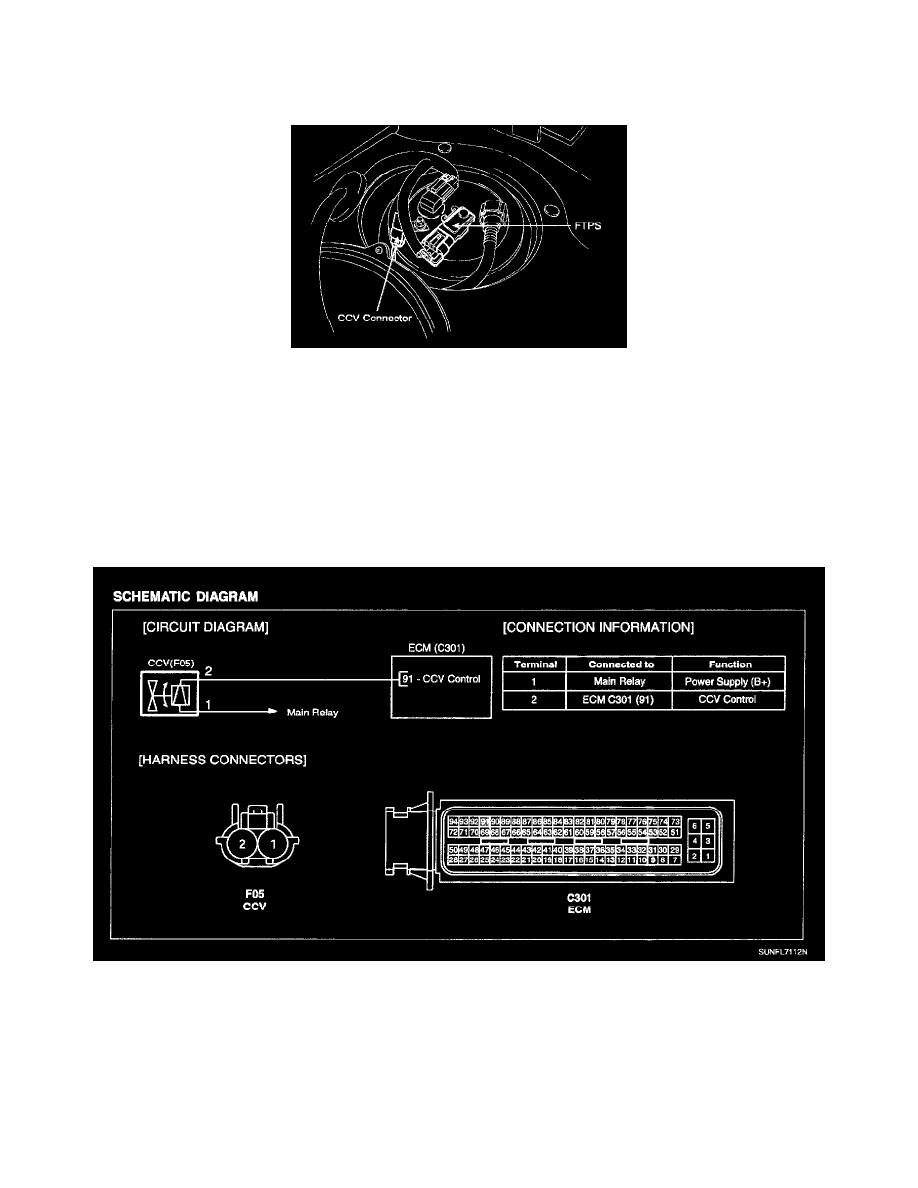Rondo L4-2.4L (2007)

Leak Detection Valve: Testing and Inspection
CANISTER CLOSE VALVE (CCV)
INSPECTION
FUNCTION AND OPERATION PRINCIPLE
The evaporative emission control system prevents hydrocarbon (HC) vapors from the fuel tank from escaping into the atmosphere where they could form
photochemical smog. Gasoline vapors are collected in the charcoal canister. The Canister Close Valve (CCV) closes oft the air inlet into the canister for
leak detection of the evaporative emission system. The CCV also prevents fuel vapors from escaping from the canister. When the engine purges the HC
vapors from the canister, the clean air comes into the canister through the canister air-filter and the CCV
SPECIFICATION
Item.....................................................................................................................................................................................................................Specification
Coil Resistance (ohm)........................................................................................................................................................15.5 - 18.5 ohms at 20 °C (68 °F)
Schematic Diagram
SCHEMATIC DIAGRAM
COMPONENT INSPECTION
1. Turn ignition switch OFF.
2. Disconnect CCV connector.
3. Measure resistance between CCV terminals 1 and 2.
4. Check that the resistance is within the specification.
